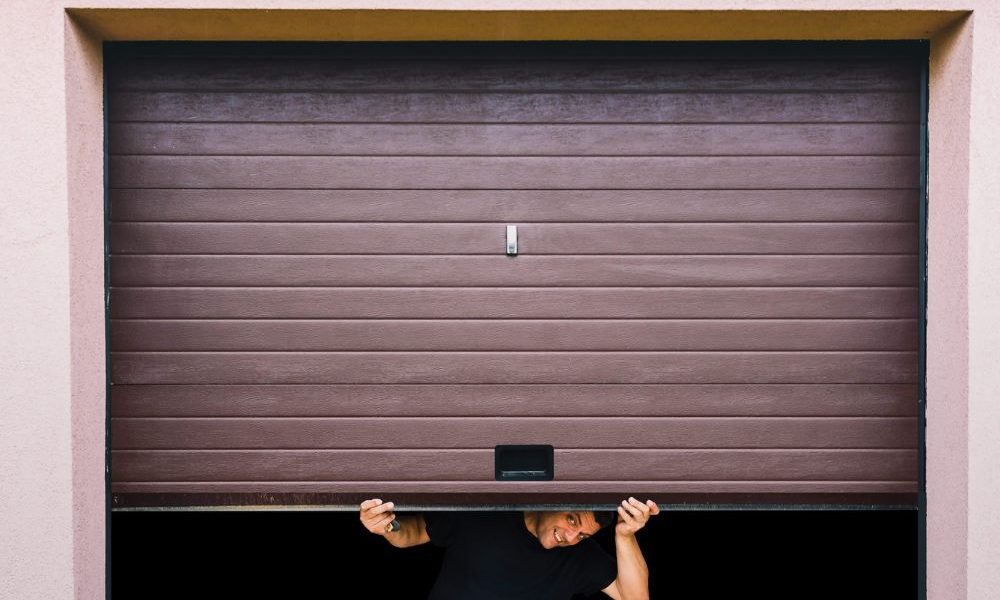We’ve all been there: you press the button on your garage door remote, but nothing happens. Your garage door won’t budge, and you’re left wondering what to do next. Before you panic, take a deep breath. There are several common reasons why your garage door might not open, and many of them have simple fixes.
As Kent Mohler, a garage door expert, advises, “The most common reason a garage door won’t open is a problem with the remote control batteries or the opener’s power source.
Before calling a technician, check these simple things first” (Source: Clopay Door Blog). This article will guide you through troubleshooting tips for common garage door problems, helping you get your door back in working order.
1. Check the Remote Control Batteries
If your garage door isn’t responding to the remote control, the first thing to check is the batteries. Dead or weak batteries are a common cause of garage door opener issues.
Solution
Replace the batteries in your remote control. If the door still doesn’t open, try using the wall switch inside the garage. If the wall switch works, the problem is likely with the remote control.
I once spent an entire afternoon trying to figure out why my garage door wouldn’t open, only to discover that the remote control batteries were dead. A quick battery change solved the problem instantly.
2. Ensure the Opener Is Plugged In
Sometimes the solution is as simple as checking if the garage door opener is plugged in. Power surges, accidental unplugging, or tripped circuit breakers can cut power to the opener.
Solution
Make sure the opener is plugged into a working outlet. Check your home’s circuit breaker panel to see if any breakers have tripped. Reset any tripped breakers and test the opener again.
Mark Westerfield, a garage door industry expert, emphasizes the importance of ensuring your opener has power: “Regular maintenance is key to keeping your garage door operating smoothly and safely. Be sure to check the power source if your door isn’t working” (Source: Overhead Door Company of Atlanta).
3. Inspect the Safety Sensors
Garage doors are equipped with safety sensors that prevent the door from closing if something is in the way. If these sensors are misaligned or blocked, the door may not open or close properly.
Solution
Check the sensors located near the bottom of the garage door tracks. Make sure they are clean, aligned, and free of obstructions. If the sensors are dirty, clean them with a soft cloth. Adjust the sensors until the indicator lights show they are aligned.
Underwriters Laboratories (UL) Garage Door Safety Standards outline the importance of maintaining and properly using safety features like photo-eye sensors to prevent accidents (Source: UL).
Our garage door wouldn’t close one evening, and it turned out that a small toy had rolled into the path of the safety sensors. Removing the obstruction solved the issue immediately.
4. Listen for Strange Noises
If your garage door is making unusual noises, such as grinding, squeaking, or banging, it could indicate a problem with the door’s components, such as the springs, rollers, or tracks.
Solution
Listen carefully to the noises and try to locate their source. Lubricate the moving parts with a garage door lubricant to reduce friction. If the noises persist, inspect the springs and tracks for signs of damage or wear.
Garo Kertenian, a garage door technician, warns, “If your garage door is making strange noises, it’s a sign that something is wrong. Don’t ignore it, as it could lead to a bigger problem down the road” (Source: Precision Garage Door).
5. Check the Springs and Cables
Broken or worn-out springs and cables can prevent your garage door from opening. These components are under high tension and can be dangerous to handle.
Solution
Visually inspect the springs and cables for signs of wear or damage. If you notice any issues, do not attempt to fix them yourself. Contact a professional garage door technician for repairs.
Bob Vila, a home improvement expert, advises, “If your garage door won’t open manually, it could be a problem with the springs or cables. These are under high tension and should only be handled by a professional” (Source: Bob Vila).
Our garage door springs snapped unexpectedly one morning, leaving the door stuck halfway open. We immediately called a professional to handle the repair, knowing the risks involved in attempting to fix it ourselves.
6. Reset the Opener
Sometimes, garage door openers can lose their connection with the remote or experience glitches that prevent them from working correctly.
Solution
Reset the opener by following the manufacturer’s instructions. This usually involves pressing a reset button on the opener unit or reprogramming the remote control. Consult your opener’s manual for specific instructions.
Angie Hicks, co-founder of Angie’s List, recommends, “If you’re not sure how to troubleshoot your garage door problem, don’t hesitate to call a qualified technician. They can diagnose the issue and get your door working again quickly and safely” (Source: Angie’s List).
7. Inspect the Tracks
Bent or misaligned tracks can prevent your garage door from opening smoothly. Debris or dirt buildup in the tracks can also cause issues.
Solution
Inspect the tracks for any bends, gaps, or obstructions. Clean the tracks with a damp cloth to remove dirt and debris. If the tracks are misaligned, use a level to check their alignment and adjust them if necessary. If the tracks are severely damaged, contact a professional for repairs.
The Home Safety Council Study identified garage doors as a potential safety hazard, emphasizing the importance of maintaining and properly using garage doors to prevent injuries (Source: Home Safety Council).
8. Test the Emergency Release
The emergency release cord allows you to manually open your garage door in case of power failure or opener malfunction. If this mechanism is engaged, it can prevent the door from operating normally.
Solution
Check if the emergency release cord is engaged. If it is, reattach the opener to the door by pulling the cord towards the door to reset the mechanism. Test the door to see if it operates normally.
During a power outage, we used the emergency release cord to open our garage door manually. However, we forgot to reset it once power was restored, which caused confusion the next time we tried to use the remote. A quick reset solved the problem.
9. Regular Maintenance Tips
Neglecting regular maintenance can lead to various issues with your garage door, including malfunctioning components and decreased lifespan.
Solution
Perform regular maintenance to keep your garage door in top condition. This includes:
- Lubricating moving parts: Use a garage door lubricant to reduce friction and wear.
- Checking the balance: Disconnect the opener and manually open the door halfway. If it stays in place, it’s balanced. If it falls, it needs adjustment.
- Inspecting the weatherstripping: Replace any damaged weatherstripping to keep out drafts and debris.
- Testing the safety features: Regularly test the auto-reverse and photo-eye sensors to ensure they work correctly.
Mark Westerfield emphasizes the importance of maintenance: “Regular maintenance is key to keeping your garage door operating smoothly and safely. Be sure to lubricate the moving parts, check the springs, and test the safety features regularly” (Source: Overhead Door Company of Atlanta).
An article by Family Handyman offers comprehensive tips on how to maintain your garage door to prevent problems and ensure its longevity (Source: Family Handyman).
Conclusion
A garage door that won’t open can be a frustrating problem, but with these troubleshooting tips, you can often identify and fix the issue yourself. Remember to check the remote control batteries, ensure the opener is plugged in, inspect the safety sensors, listen for strange noises, and perform regular maintenance. If you encounter more complex problems, such as issues with the springs or cables, always contact a professional technician for assistance.
For more insights and tips, check out the following studies and articles:
- Consumer Reports Garage Door Opener Ratings (Consumer Reports)
- Underwriters Laboratories (UL) Garage Door Safety Standards (UL)
- Home Safety Council Study on Garage Door Injuries (Home Safety Council)
- DIY vs. Professional Garage Door Repair (This Old House)
- Garage Door Maintenance Tips (Family Handyman)
By following these guidelines and maintaining your garage door regularly, you can keep it operating smoothly and safely for years to come.

